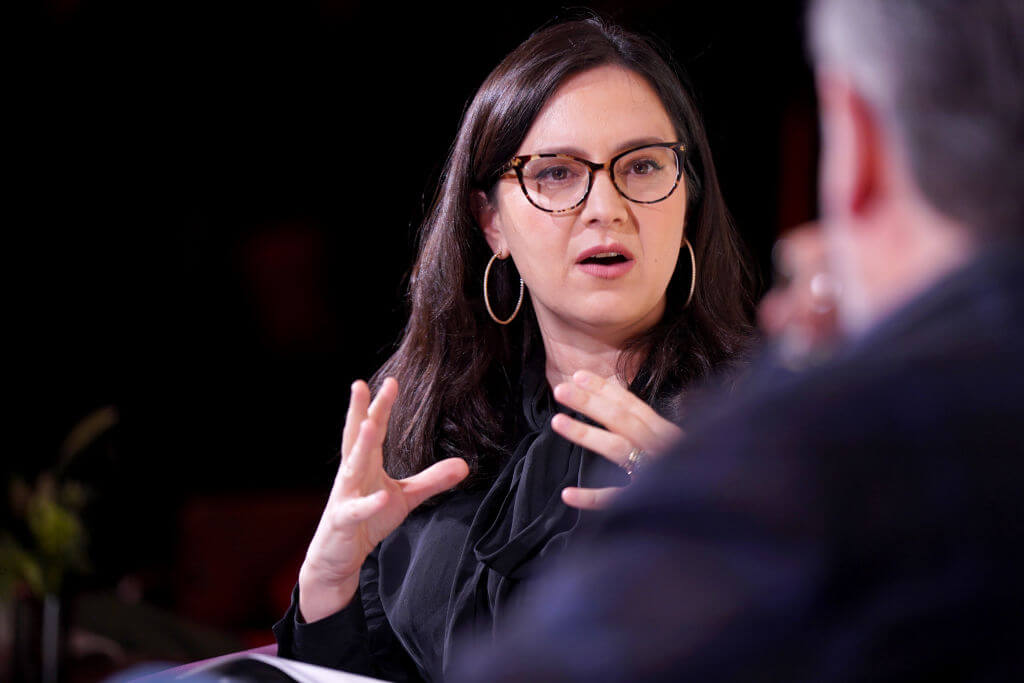His ads changed how Jews were perceived — do they still matter?

Graphic by Angelie Zaslavsky
Advertising is a form of history.
That’s the overwhelming thought you get when you listen to the legendary Gary Wexler discuss his 20 years of arresting, moving, and often simply heart-stopping advertisements about Jewish community and identity that will now be an archive at the National Library of Israel. While Jewish history is often told through a library of text — and of course, the Torah itself is a veritable scroll — there is something visceral about seeing the complexity of peoplehood distilled into clear visuals accompanied by the barest amount of wording.
It is a body of work that Wexler always saw as aiming for the Jewish soul.
The archive got to the National Library through a serendipitous accident — when Wexler was clearing out his garage in Los Angeles. The binders and boxes in the garage represented years working on advertising campaigns for America’s corporate titans — Coke, Apple and Bank of America.
“I thought — what am I saving this for?” Wexler said. “I start to toss out, and then I come across the Jewish ones, and I think oh my God — I captured a 20-year history of everything that was happening in the Jewish world from 1986-2006. I can’t throw this away. I didn’t know what to do with it.”
As the clean-out proceeded, Wexler happened to have a phone conversation with a friend who works at the library in Jerusalem. The friend asked Wexler to send some photos. That conversation and photo exchange led to the acquisition of the first-ever archive of Jewish advertising in the history of the library.
It’s not hard to understand why the library rushed to acquire these materials — there is nothing in the Jewish world like it.

New Age: With this ad, Wexler targeted liberal Jews and readers of “The Jew in the Lotus.” Image by Courtesy of Gary Wexler
In 1988, Wexler was asked to come up with an advertising campaign for Jewish education, a request which resulted in some extremely bold ads. It was a moment when Wexler happened to be thinking about the direction of his professional life, about the purpose of it all. Then came 1992 — the moment where Wexler’s history, American history and world Jewish history started to come together, a moment which seems especially relevant right now, as protesters fill the streets.
“It was following the Rodney King riots that I approached the Federation and said to them, “we as Jews need to do something to help heal this city, and share our practices of successful community organizing and fundraising with the affected communities.”
“They at first rejected it,” Wexler recalled. “I told them that I would do this myself on behalf of the Jews. They eventually acquiesced.”
“They sponsored an evening with many of the communities in L.A. and it was the first time in my life that I applied my marketing knowledge to community organizing and nonprofits. That night there were 500 people of all colors. After I did my session, I came home to my wife and told her that I found a new profession, working in the nonprofit sector. For the next several years, I worked pro bono with organizations all over the city.”
That pro bono work became a business. In June 1994, Wexler began doing paid work for the Federation, and then in 1996 he started Passion Marketing.
I asked Wexler to discuss some of his most memorable work to get a sense of the thinking behind the art, and the marketing strategy of his showstoppers. Our wide-ranging conversation touched on the importance of messaging, the best ways to get ideas across, and why advertising — for the essence of Jewish life — is both an art and a calling.
Jew. 1988

Making His Mark: This ad, targeted at Jewish educators made Gary Wexler a known quantity in the Jewish world. Image by Courtesy of Gary Wexler
This is the ad that helped propel Wexler’s reputation in the Jewish world.
“In 1988, while working as a creative director in advertising, I was approached by the Bureau of Jewish Education, where I was a board member, and asked if I would volunteer to present a marketing campaign for Jewish education,” recalls Wexler. “It was the first time anyone in the Jewish community had asked me to do anything with my advertising knowledge.”
Wexler’s task and challenge was to figure out how to market a Jewish education.
To begin with, he approached unaffiliated Jews he worked with at his agency, wondering if they could design a campaign that could convince people like them — people who didn’t belong to a synagogue and weren’t yeshiva graduates — to consider a Jewish education for their own children.
“I pulled out the six Jews on the creative staff of 35 people and convinced them to work with me on this to create a campaign directed at people just like themselves — non-involved Jews — to convince them to send their kids to some form of Jewish education. They helped me create that campaign. As a result, I ended up on the lecture circuit across North America advocating for Jewish organizations to do marketing, which they were not doing.”
After Wexler presented his ideas in Jerusalem, a reporter wrote a story that ran with the headline “Can you sell a Jewish education like toothpaste?”
The ad didn’t specifically target parents; it targeted Jewish educators. But, Wexler says, it was also for “Jews out there in the world who aren’t the core constituency. Every Jew is an owner of the Jewish world regardless of how involved they are.”
It’s Time to Talk About Jews and Money. 1994

Jews and Money: “I wanted the typeface to be intellectual and credible. I wanted it to look sophisticated,” Wexler said. Image by Courtesy of Gary Wexler
“This was the Federation’s test effort to do a campaign about raising money for Jewish causes,” Wexler recalls. “I thought — let me start with one of the most negative stereotypes and then turn it on its ear. I wanted the typeface to be intellectual and credible. I wanted it to look sophisticated, and not like it was a joke. If the stereotype about all Jews had any validity, we wouldn’t be running this ad. There are 60,000 Jews in Los Angeles who are living below the poverty line.”
Another ad of Wexler’s directly confronted questions about Israel’s right to exist. I was curious how he felt about it now. “I think there is a certain percentage of exceedingly liberal Jews who feel that Israel’s existence is not legitimate — that has changed,” Wexler says. “But the idea that American Jews and Israel don’t always see eye to eye remains relevant.”
Uncommon People, One Common Ground, circa 2000

Wexler’s Favorite: Many visitors to the Ben-Gurion Airport have seen this poster. Few know that Gary Wexler created it. Image by Courtesy of Gary Wexler
This ad is Wexler’s favorite. Visitors to Israel’s Ben-Gurion Airport may have glimpsed it, probably not knowing the name of the advertising mastermind behind it.
“This was a campaign for the sochnut — the Jewish Agency for Israel. It was outside of the Jewish agency building, draped on the door. And at Ben Gurion Airport, when you arrived it had a huge banner of this campaign,” Wexler recalls. “I felt that I wanted to position Israel to all the Jews in the world as something they would relate to.”
Today, Wexler is an adjunct professor in the M.A. program at the University of Southern California’s (USC) Annenberg School of Communication, a consultant and writer. Like all of us, he has often wondered if any of his work mattered — especially right now, with the state of the world.
“I was walking around all last year thinking I failed, what change has come about? And when the National Library came along and said, this is important, it will be there in perpetuity, it will be there forever, it gave me the feeling that I had succeeded. I have contributed to Jewish life, and that my effort will be there forever.”
“At the core of all this work is the creative process,” he said. “My belief is that at the core, we are creative people and we will not succeed without creativity at the level of experience. And when you visit the archive, you will be able to see that creativity is central to Jewish life.”
The Wexler Archive makes the case that advertising — yes, advertising — is part of the story of Jewish creativity and Jewish history. The archive, permanently housed at the National Library of Israel in Jerusalem, is open to the public.
Aviya Kushner is The Forward’s language columnist and the author of “The Grammar of God” (Spiegel & Grau) and the forthcoming “Wolf Lamb Bomb” (Orison Books, 2021). Follow her on Twitter @AviyaKushner
















